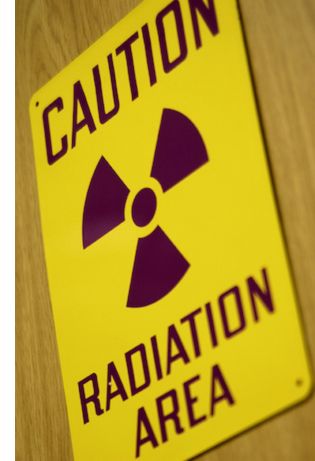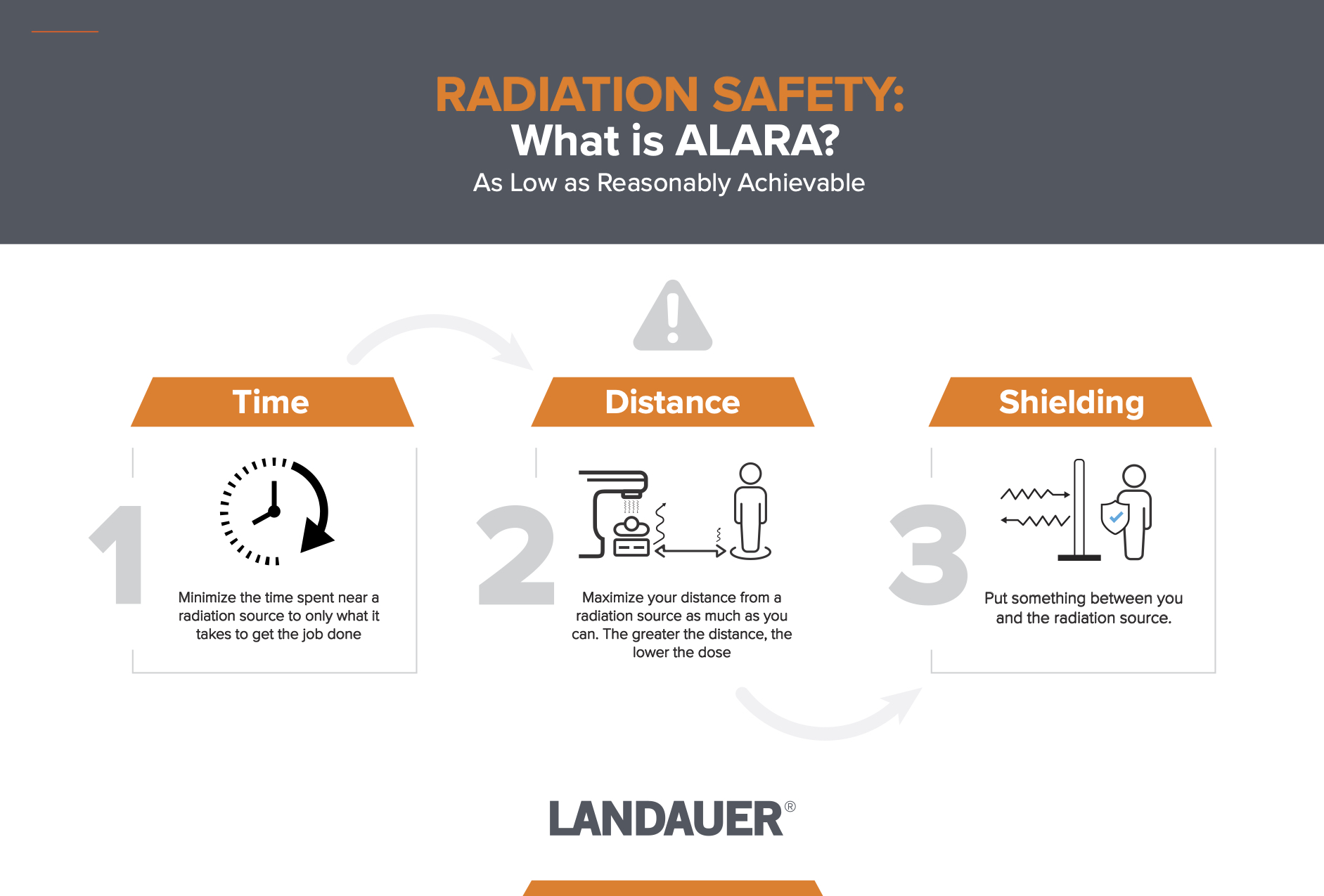
What Does ALARA Mean and Why Is It So Important?
The acronym ALARA stands for “As Low As Reasonably Achievable.” ALARA safety protocols protect professionals who utilize ionizing radiation by keeping their exposure as low as possible. Numerous occupations in the clinical, industrial, and research fields require the use of ionizing radiation to effectively complete essential tasks, but exposure to such radiation can pose a hazard to these workers over time if not monitored. Thus, this principle of radiation protection known as ALARA is made to keep radiation levels as low as possible for personnel and patients.
Need help setting up an ALARA program? Our Radiation Safety Support Services team is here to help!
 What Is the Purpose of ALARA?
What Is the Purpose of ALARA?
ALARA is the guiding principle of radiation safety. The main purpose of ALARA is to protect employee health and establish a safe working environment. Since radiation is invisible to the human eye, but can be harmful at high exposures, it is important to keep radiation exposure as low as possible. ALARA safety protocols are broken down into three simple steps to make this happen.
What are the Three Key Principles of ALARA?
ALARA regulatory guidelines reduce workers’ exposure to radiation through three main principles:
- Time
- Distance
- Shielding
Time
Minimize the time spent near the source of radiation to limit unnecessary exposure by working efficiently and leaving the area as soon as possible.
Distance
Maximize the distance between workers and the source of radiation. As distance increases, the dose of radiation decreases. In fact, the inverse square law states that doubling the distance from a point source of radiation reduces the dose rate four times less than it was at the original distance from it.
Shielding
Place a barrier between workers and the radiation source to greatly limit exposure. Examples of radiation shielding include standing behind a concrete wall outside the room or wearing a lead apron.
Why Is ALARA So Important?
ALARA is an essential principle to follow because it reduces radiation exposure as much as possible while allowing radiation workers to achieve the best results on the job. Understanding the meaning of ALARA and adhering to ALARA safety protocols is the best way to protect professionals who utilize ionizing radiation without hindering their ability to successfully execute tasks.
Who Does ALARA Protect?
ALARA is designed to protect people by lowering their exposure of ionizing radiation. Within organizations that work with radiation (such as those in radiology, healthcare settings, research, and more), ALARA regulatory guidelines are an important measure of a radiation protection plan.
ALARA: The Golden Rule of Radiation Safety
ALARA regulatory guidelines have been practiced for decades and are established safety protocols that assist in minimizing radiation exposure for workers. Adhering to ALARA guidelines involves minimizing the time spent near radiation sources, maximizing the distance between workers and the source of radiation, and placing a barrier to shield them from radiation. The combination of these concepts will ensure that radiation workers receive the smallest dose possible every time they are near a radiation source while providing a high-quality exam for patients.
For assistance with your radiation protection plan, including how best to implement ALARA safety protocols, don’t hesitate to contact us today!
“Not long after the discovery of ionizing radiation, it became clear that exposure to high doses of such radiation was detrimental to human health. After the bombings that ended World War II, the United States moved toward further investment in both nuclear weaponry and nuclear energy for civilians. The Nuclear Regulatory Commission, laid out increasingly stringent safeguards to protect both civilians and nuclear workers. This effort culminated in the ALARA (As Low As Reasonably Achievable) protocol, which eventually became adopted as the gold standard of nuclear safety.”
Michael Baumer, March 14, 2015 (http://large.stanford.edu/courses/2015/ph241/baumer2/)

